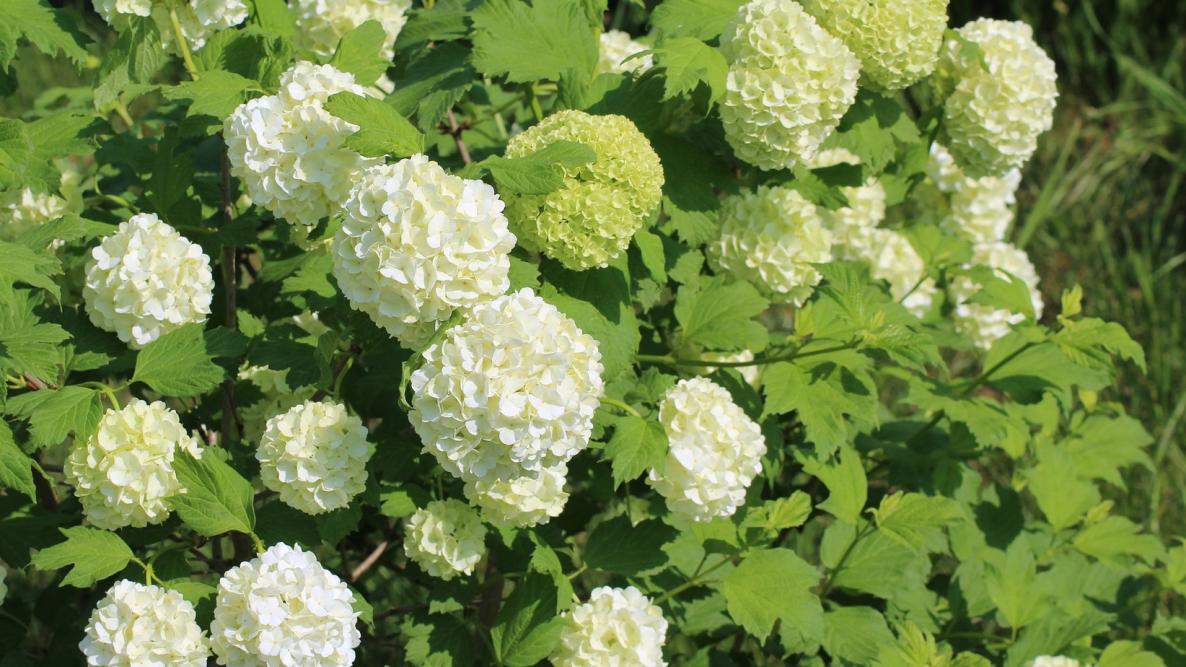Table of Contents
To maintain a healthy and beautiful viburnum bush, regular trimming is required. However, it may seem complex if this is your first time doing it. Have no dread! This viburnum pruning tutorial can help you become an expert in no time.
Let’s begin with some history: There is a wide selection of blooming bushes called viburnums. They’re well-liked in backyard gardens because of the variety of flower colours and styles you may achieve without effort on the gardener’s part.
Viburnums may be roughly categorized into two groups based on whether or not their flowers appear on new growth or old wood. Flowers that bloom in the spring require pruning just after they bloom, while those that bloom in the summer require pruning in the late winter or early spring.
Knowing when to prune viburnum is the first step, and below we’ll teach you the ins and outs of it.
When To Prune Viburnum
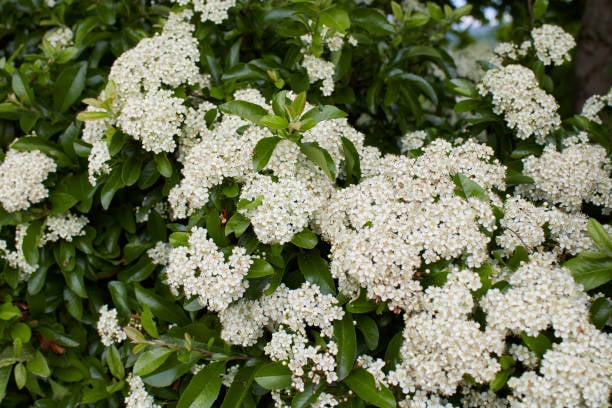
The best time to prune viburnum depends on the specific type of Viburnum plant and your pruning goals. Generally, you should prune most Viburnum plants in late winter or early spring before new growth appears. This timing allows the plant to recover from pruning before the growing season begins.
Anytime during the plant’s dormant season is fine for shaping and size control trimming. Cut away dead or diseased branches and thin down the healthy ones to prevent the tree from becoming overgrown.
Waiting until the plant has completed flowering is ideal if you want to prune it to promote new blossoms. In this way, the plant may put on a floral show before you begin pruning it. For instance, if your Viburnum blooms in the early spring, wait until the flowers have gone before cutting back the shrub.
In other words, certain Viburnum species set their flower buds on the growth from the prior season. Late-season pruning might result in the loss of next year’s bloom buds on these plants. Some species of viburnum, such as Viburnum carlesii, Viburnum opulus, and Viburnum trilobum, produce flowers on aged wood. Trimming these Viburnums just after they finish flowering is preferable so that next year’s blossoms are not lost.
The Different Types Of Viburnum And Their Pruning Needs
There are many types of viburnum, each with unique characteristics and pruning needs. Here are some examples of popular Viburnum species and their recommended pruning methods:
- Viburnum tinus: This evergreen shrub should be pruned immediately after flowering in late winter or early spring. Cut back any dead or damaged branches, and trim back the tips of the remaining branches to control their size.
- Viburnum opulus: This shrub produces beautiful white flowers in the spring and bright red berries in the fall. It blooms on old wood, so prune it immediately after flowering to avoid removing next year’s flower buds. Remove any dead or damaged branches, and thin out any crowded or crossing branches.
- Viburnum plicatum: This shrub’s distinctive horizontal branching pattern makes it stand out in the garden. Prune it in late winter or early spring before new growth. Remove any dead or damaged branches, and thin out any crowded or crossing branches to maintain their shape.
- Viburnum carlesii: This shrub produces fragrant pink or white flowers in the spring and should be pruned immediately after flowering. Remove any dead or damaged branches, and thin out any crowded or crossing branches.
- Viburnum davidii: This evergreen shrub requires pruning in late winter or early spring before new growth. Cut back any dead or damaged branches, and trim back the tips of the remaining branches to control their size.
In general, it’s essential to know whether your blooms on old or new wood, as this will determine when to prune viburnum. Those blooming on old wood, like Viburnum opulus and carlesii, prune immediately after flowering. For those that bloom on new wood, like Viburnum tinus and Viburnum davidii, prune in late winter or early spring before new growth appears.
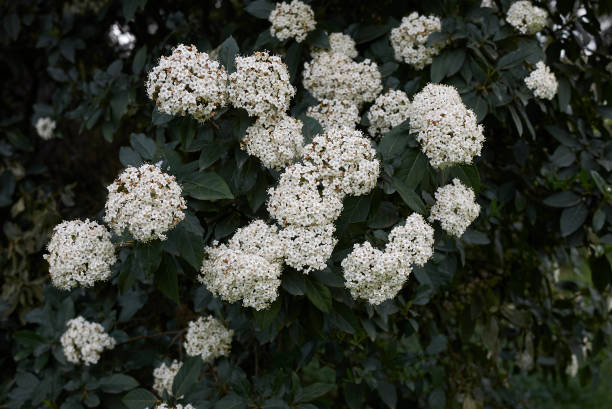
Pruning For Health: Keeping Your Viburnum Disease-Free
Pruning can be an effective way to keep your viburnum healthy and disease-free. Here are some tips for when to prune viburnum to promote the health of the plants:
- Remove dead or diseased wood: Dead or diseased wood can harbour harmful insects and diseases that can spread throughout the plant. Prune out any dead or diseased wood as soon as you notice it.
- Thin out crowded or crossing branches: Crowded or crossing branches can rub against each other, creating wounds that can be entry points for disease. Thin out these branches to promote air circulation and prevent the spread of disease.
- Remove suckers: Viburnum plants can produce suckers, which are shoots that grow from the roots or base of the plant. These can drain energy from the main plant, making it more disease-resistant. Remove suckers as soon as you notice them.
- Prune after a disease outbreak: If your Viburnum has been affected by a disease outbreak, prune out any infected branches to prevent the disease from spreading further. To prevent the spread of illness, sterilize your pruning equipment between each cut.
Don’t prune while it’s raining since it might cause slow-healing sores that illness can enter through. If you want to trim your viburnum, wait until it dries outside. Regularly trimming your viburnum can keep your plants free of disease and ensure they always look their best.
Shaping Your Viburnum: Tips For Achieving Your Desired Look
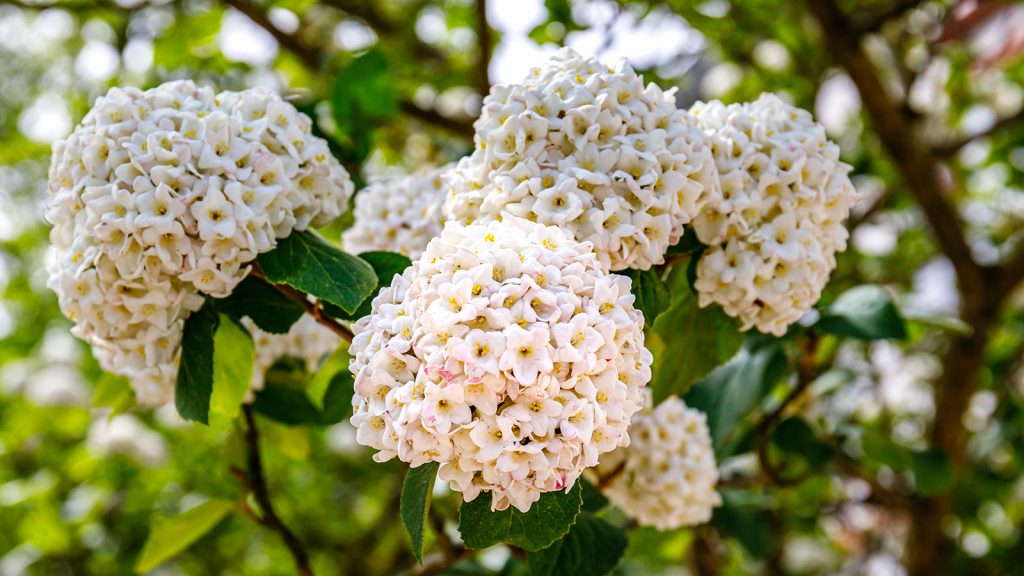
You may effectively shape viburnum by pruning to produce a particular aesthetic in a garden. Some suggestions for shaping your viburnum:
- Pick the form you’d like to have: Choose between a rounded form and a pyramidal form for your viburnum. Insights from here can direct your tree-trimming strategies.
- Always prune using clean, sharp tools: Make clean cuts that heal fast with the help of sharp and clean pruners. Disinfect your tools between cuts to avoid spreading disease.
- Start with young plants: If you want to shape your viburnum, start when the plant is young. It will make it easier to train the plant into the desired shape.
- Prune selectively: Avoid over-pruning your viburnum, damaging the plant and reducing its overall health. Prune selectively, removing only the branches necessary to achieve the desired shape.
- Step back and assess your work: Step back and assess your work after making cuts. It will allow you to see the plant’s overall shape and make any additional pruning decisions.
- Be patient: Shaping a Viburnum can take time and patience, especially if starting with an older plant. Try to achieve your desired shape promptly. Instead, make small, incremental changes over time.
Tools Of The Trade: Essential Pruning Equipment For Viburnum
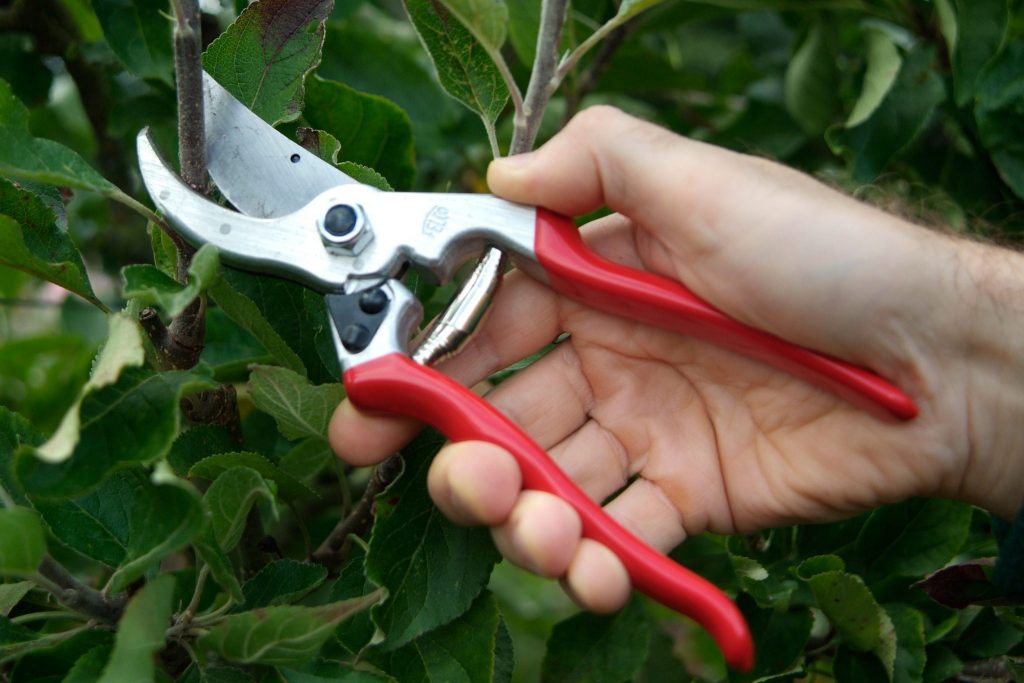
To maintain their health and beauty, viburnums must undergo periodic trimming. Having the right tools at your disposal makes completing any task much easier and quicker. The equipment list for cutting back a Viburnum includes:
- Shears for trimming: Pruning shears are necessary to cut small stems and branches precisely. Pick a pair that fits your hand well and has razor-sharp blades.
- Loppers: Larger branches too thick to cut with pruning shears can be lopped off with loppers. Pick a pair with long handles if you need to exert force.
- Pruning saw: Larger branches that cannot be lopped off with loppers can be pruned with a pruning saw. Choose a saw with a sharp blade and comfortable grip.
- Gloves: Gloves protect your hands from thorns and other hazards while pruning. Choose gloves made of a durable material with a comfortable fit.
- Eye protection: Eye protection, such as safety glasses or goggles, should be worn while pruning to protect your eyes from debris and branches.
- Disinfectant: Use a disinfectant to clean your pruning tools between cuts to prevent the spread of disease.
Make sure your pruning tools are sharp and clean before using them.
Avoiding Common Pruning Mistakes
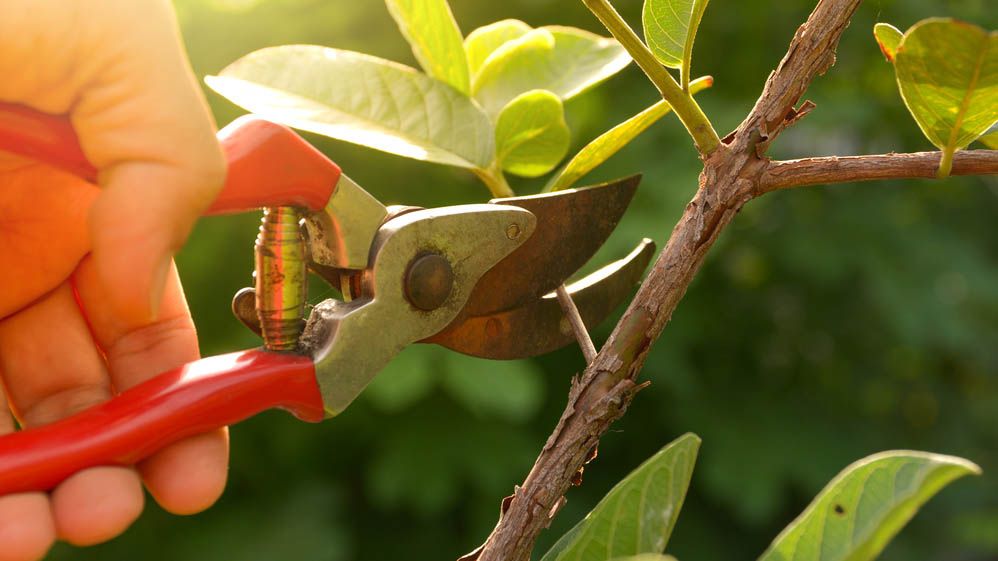
Although viburnum might benefit from pruning, avoiding frequent blunders that harm the plant is essential. To help you prune your viburnum correctly and prevent frequent blunders, consider the following:
- Avoid pruning too much: Viburnum plants can be sensitive to over-pruning, which can stunt their growth or cause damage. Avoid removing more than 1/3 of the plant’s overall growth at once.
- Don’t prune at the wrong time: Pruning at the wrong time of year can remove next year’s flower buds or cause damage to the plant. Follow the recommendations for pruning timing based on the specific type of viburnum you are pruning.
- Avoid leaving stubs: Flush clean cuts with the trunk or main branch when pruning branches. Leaving stubs can create entry points for disease and pests.
- Do not trim excessively near the tree’s base: Trimming too closely may harm the bark and promote the development of frail, easily diseased new branches.
- Refrain from pruning during times of strain: If your Viburnum is experiencing stress due to drought, illness, or other factors, postpone pruning until the plant has recuperated. Pruning a plant that is already under stress could have negative consequences.
Winter Pruning: Maximizing Viburnum Growth In The Spring
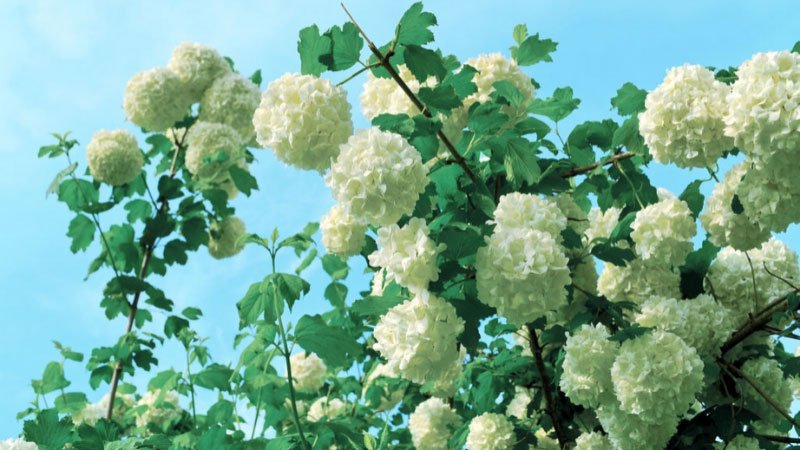
Winter trimming might be a helpful chore if you want to encourage the new growth of viburnum in the spring. Here are several winter-pruning strategies for maximizing the spring growth of viburnum:
- Prune when the plant is dormant: Remove dead or diseased branches from your viburnum in the late winter or early spring. The plant will have time to heal from its recent trimming before the start of the growing season.
- Remove dead or damaged wood: Remove any dead or damaged wood to promote new growth in healthy branches.
- Thin out crowded or crossing branches: Thin out any crowded or crossing branches to promote air circulation and prevent the spread of disease.
- Cut back overgrown branches: Cut back any branches that have grown too long to promote new growth in the remaining branches.
- Use sharp and clean pruning tools: Use sharp and clean pruning tools to make clean cuts that heal quickly. Disinfect your tools between cuts to avoid spreading disease.
- Consider the plant’s growth habit: Consider the natural growth habit of the Viburnum plant when making pruning decisions. Maintain the Viburnum plicatum’s horizontal branching pattern.
Pruning Mature Viburnum: Best Practices For Older Plants
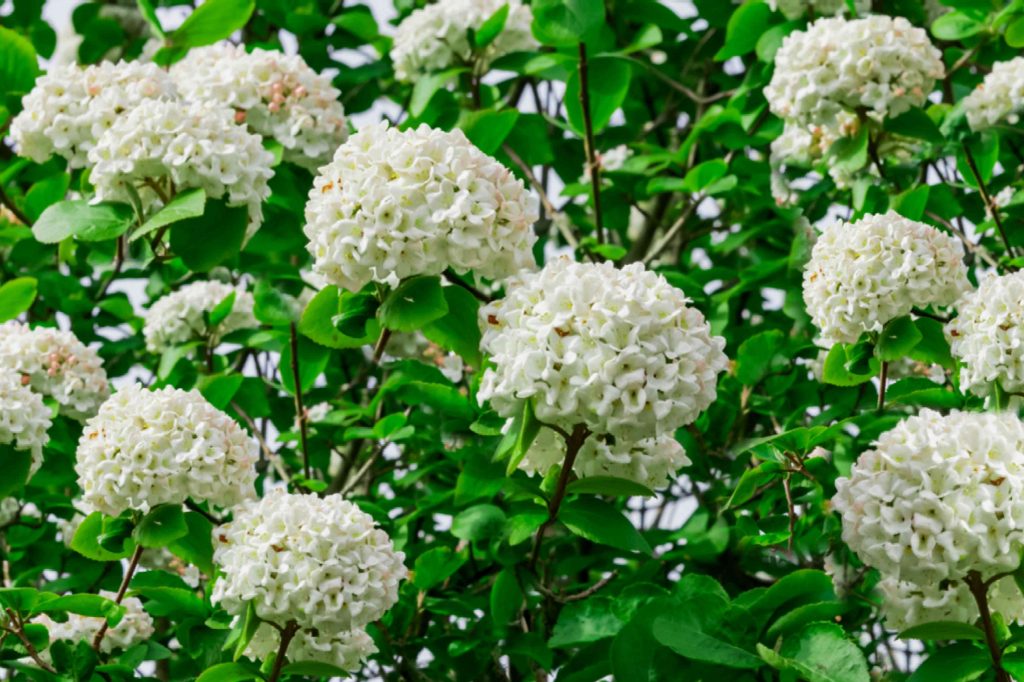
Pruning older Viburnum plants is more challenging. Mature Viburnum pruning tips:
- Understand the plant’s growth: Know your Viburnum species’ growth tendencies before trimming. Maintain the Viburnum plicatum’s horizontal branching pattern.
- Remove dead or diseased wood: Remove any dead or diseased wood to promote new growth in healthy branches.
- Thin out crowded or crossing branches: Thin out any crowded or crossing branches to promote air circulation and prevent the spread of disease.
- Use a handsaw for thicker branches: Use a handsaw instead of loppers or pruning shears to avoid damaging the branch or causing a wound that may not heal properly.
- Prune gradually: When pruning matures viburnum, prune gradually over several years instead of all at once. It will prevent stress on the plant and allow it to recover more quickly.
- Only prune a little: Avoid over-pruning mature viburnum, damaging the plant and reducing its overall health. Never cut more than 1/3 of the plant’s growth.
Pruning Young Viburnum: Setting Them Up For Success
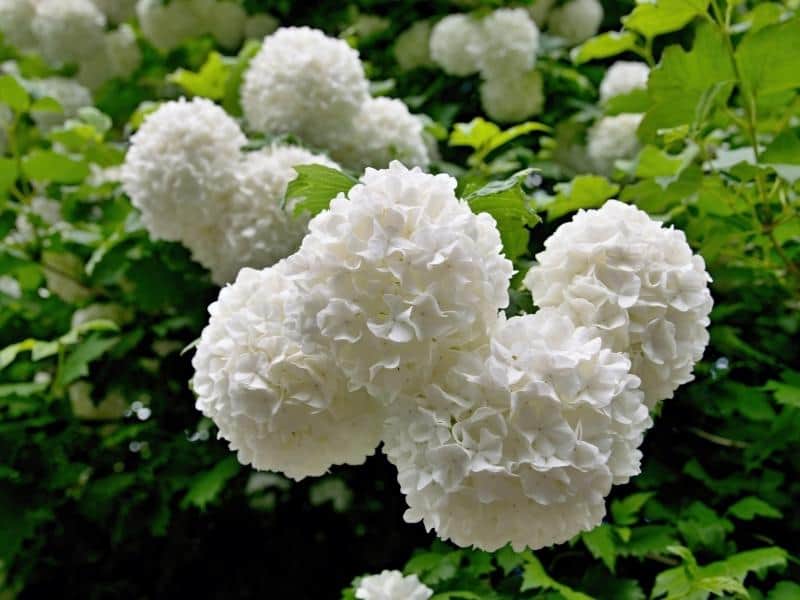
You must prune young viburnum for it to thrive. Young Viburnum trimming tips:
- Start pruning in the first few years: Trim juvenile viburnum early to shape and encourage healthy development.
- Branch removal: Remove crossed or broken branches to improve airflow and avoid illness.
- Limit pruning to maintenance: Young Viburnum requires time to establish, so limit trimming to maintenance in the first several years.
- Selectively prune: Only remove branches needed to form juvenile viburnum.
- Avoid over-pruning: Over-pruning young viburnum can harm it and lower its health. Never cut more than 1/3 of the plant’s growth.
- Timing pruning: Follow the pruning timing for your Viburnum kind. Most Viburnum plants require pruning in late winter or early spring before new growth.
To Sum Up!
Viburnum needs regular pruning to keep it healthy and looking good. You can promote new growth, modify the plant’s size and form, and stop the spread of disease and pests by knowing when to prune viburnum and using the proper techniques.
Remember to use only clean, sharp tools when pruning and make your incisions 45 degrees above a bud or branch collar. Dead or diseased branches should be cut down first, followed by those crossing or too close together.
The timing of your viburnum pruning is crucial. It’s preferable to prune viburnums in late winter or early spring before the plant begins vigorous growth. However, this timing can vary according to the species. It gives the plant ample time to heal and re-grow before the following growing season begins.
Last but not least, consider its natural form and growth tendencies when pruning your viburnum. Your viburnum can flourish and keep its stunning beauty year after year if you take the necessary steps at the proper times.

